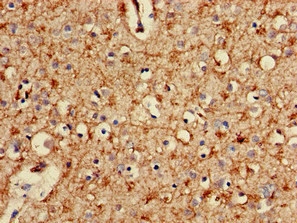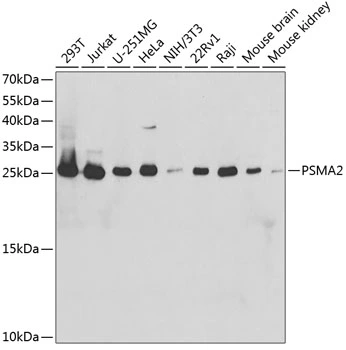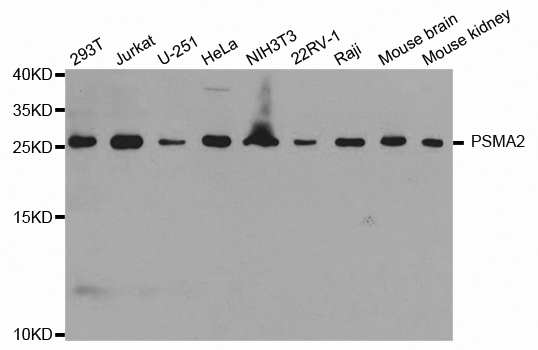Proteasome 20S alpha 2 antibody [N1C3]
GTX103620
ApplicationsImmunoFluorescence, Western Blot, ImmunoCytoChemistry, ImmunoHistoChemistry, ImmunoHistoChemistry Paraffin
Product group Antibodies
TargetPSMA2
Overview
- SupplierGeneTex
- Product NameProteasome 20S alpha 2 antibody [N1C3]
- Delivery Days Customer9
- Application Supplier NoteWB: 1:500-1:3000. ICC/IF: 1:100-1:1000. IHC-P: 1:100-1:1000. *Optimal dilutions/concentrations should be determined by the researcher.Not tested in other applications.
- ApplicationsImmunoFluorescence, Western Blot, ImmunoCytoChemistry, ImmunoHistoChemistry, ImmunoHistoChemistry Paraffin
- CertificationResearch Use Only
- ClonalityPolyclonal
- Concentration1 mg/ml
- ConjugateUnconjugated
- Gene ID5683
- Target namePSMA2
- Target descriptionproteasome 20S subunit alpha 2
- Target synonymsHC3, MU, PMSA2, PSC2, proteasome subunit alpha type-2, alpha-2, macropain subunit C3, multicatalytic endopeptidase complex subunit C3, proteasome (prosome, macropain) subunit, alpha type, 2, proteasome component C3, proteasome subunit HC3, proteasome subunit alpha 2
- HostRabbit
- IsotypeIgG
- Protein IDP25787
- Protein NameProteasome subunit alpha type-2
- Scientific DescriptionThe proteasome is a multicatalytic proteinase complex with a highly ordered ring-shaped 20S core structure. The core structure is composed of 4 rings of 28 non-identical subunits; 2 rings are composed of 7 alpha subunits and 2 rings are composed of 7 beta subunits. Proteasomes are distributed throughout eukaryotic cells at a high concentration and cleave peptides in an ATP/ubiquitin-dependent process in a non-lysosomal pathway. An essential function of a modified proteasome, the immunoproteasome, is the processing of class I MHC peptides. This gene encodes a member of the peptidase T1A family, that is a 20S core alpha subunit. [provided by RefSeq]
- Storage Instruction-20°C or -80°C,2°C to 8°C
- UNSPSC12352203
References
- Possible roles of the transcription factor Nrf1 (NFE2L1) in neural homeostasis by regulating the gene expression of deubiquitinating enzymes. Taniguchi H et al., 2017 Feb 26, Biochem Biophys Res CommunRead more






